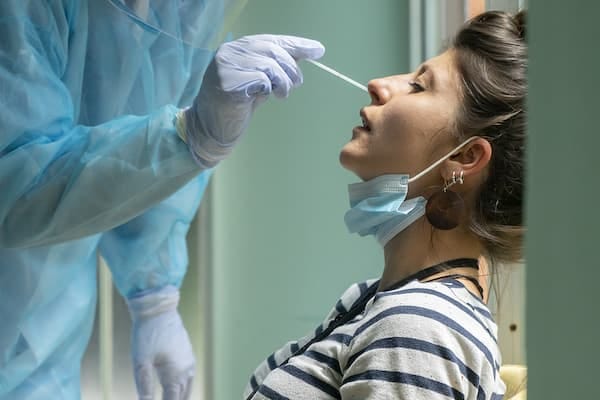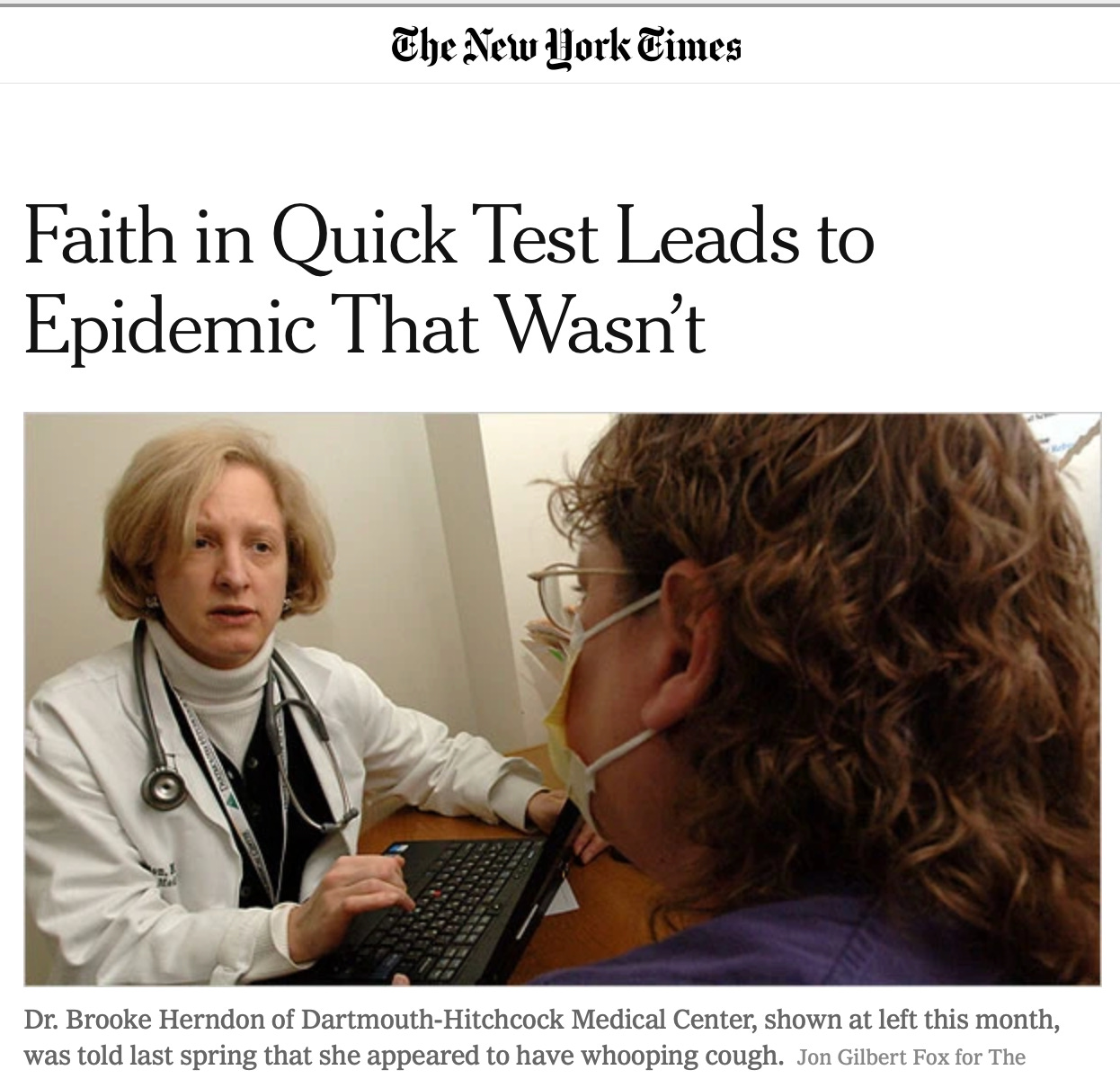Article by Scott Armstrong | Rebunked News | @RebunkedNews
Clips from The Daily Wrap-up with Ryan Cristián:
For more, please visit TheLastAmericanVagabond.com
Follow TLAV on Twitter: @TLAVagabond
Are They Really Going To Try Again?
If you’ve been following The Last American Vagabond since the original COVID era, you are very well versed in the deception that is the PCR method, which is allegedly the “Gold Standard” when it comes to detecting the COVID “virus.”
The only problem is that it isn’t, and we have proven it.
This clip and article should serve as a resource for those who may be new to this aspect of the narrative or should be shared with others who may not be fully aware of the trickery that was implemented using PCR and how it artificially drove “case” numbers up during the 2020 lockdown era.
What is the PCR Method?
The PCR method, which you will commonly hear referred to as the PCR Test, is otherwise known as the Polymeric Chain Reaction method. It was invented in 1983 by Kary Mullis. In 1993, Mullis was awarded the Nobel Prize for his work developing this method.
According to The National Human Genome Research Institute:
Sometimes called "molecular photocopying," the polymerase chain reaction (PCR) is a fast and inexpensive technique used to "amplify" - copy - small segments of DNA. Because significant amounts of a sample of DNA are necessary for molecular and genetic analyses, studies of isolated pieces of DNA are nearly impossible without PCR amplification.
The Epidemic That Wasn’t
Some of you who may know all about the PCR test might be surprised to find out that the COVID situation was not the first time that PCR testing was used to create public panic over a potential disease outbreak that turned out not to be real. According to this New York Times article from 2007 entitled “Faith in Quick Test Leads to Epidemic That Wasn’t”:
For months, nearly everyone involved thought the medical center had had a huge whooping cough outbreak, with extensive ramifications. Nearly 1,000 health care workers at the hospital in Lebanon, N.H., were given a preliminary test and furloughed from work until their results were in; 142 people, including Dr. Herndon, were told they appeared to have the disease; and thousands were given antibiotics and a vaccine for protection. Hospital beds were taken out of commission, including some in intensive care.
Then, about eight months later, health care workers were dumbfounded to receive an e-mail message from the hospital administration informing them that the whole thing was a false alarm.
All of this panic was predicated on the notion that an outbreak had occurred and medical interventions were carried out based on faulty information. Can you guess what “test” was used to gather this incorrect data? The article goes on to say:
At Dartmouth the decision was to use a test, P.C.R., for polymerase chain reaction. It is a molecular test that, until recently, was confined to molecular biology laboratories…
…“The big message is that every lab is vulnerable to having false positives,” Dr. Petti said. “No single test result is absolute and that is even more important with a test result based on P.C.R.”
This indicates that the medical establishment knew in 2020 that the PCR was potentially problematic and it could be argued that this is why PCR was the weapon of choice when it comes to COVID.
Cycle Thresholds
The key to understanding how PCR tests can be manipulated is the concept of cycle thresholds. As the PCR process amplifies genetic materials at an exponential rate, one can effectively zoom in and find traces of whatever it is they are looking for.
The more times they zoom in (also known as increasing cycles), the more likely it is they will find that material. At higher cycles, it becomes less likely that the pathogen they find actually is infectious. Once you get above 30 cycles, whatever they find that they refer to as a “disease causing pathogen,” becomes almost inconsequential.
According to Public Health Ontario, this is the how PCR is used in relation to “detecting” coronaviruses:
Since coronaviruses don’t have DNA, the first step of PCR testing is converting the virus’s RNA into DNA in a process called reverse transcription. This is because DNA is a lot more stable than RNA. The PCR machine then makes millions of copies of the DNA by running multiple “cycles” (like a washing machine). This process is called amplification and is extremely important in finding even the smallest amounts of DNA. As more cycles are run, more copies of the DNA are made —doubling every time it is copied —and making it easier to find.
So what is the cycle threshold where this data becomes irrelevant? Public Health Ontario also claims that number to be 38 cycles.
The cutoff point for a positive result for PHO’s developed lab test is 38 cycles. This means that if the virus is found at or before 38 cycles are completed, then the test is considered positive. The cutoff point for a negative result is 40 cycles. If the virus is detected between 38 and 40 cycles, we call this an indeterminate or inconclusive result. All inconclusive results are considered probable (likely) cases for public health reporting.
In this peer-reviewed study entitled “External peer review of the RTPCR test to detect SARS-CoV-2 reveals 10 major scientific flaws at the molecular and methodological level: consequences for false positive results,” scientists claim that any test above the 35 cycle threshold would have a 97% chance of creating a false-positive. In the case of Public Health Ontario, they were operating at 38 cycles. Many labs throughout the world operated at a 35-40 cycle threshold, or higher! According to this paper:
The number of amplification cycles (less than 35; preferably 25-30 cycles); In case of virus detection, >35 cycles only detects signals which do not correlate with infectious virus as determined by isolation in cell culture [reviewed in 2]; if someone is tested by PCR as positive when a threshold of 35 cycles or higher is used (as is the case in most laboratories in Europe & the US), the probability that said person is actually infected is less than 3%, the probability that said result is a false positive is 97%.
So when we see hospitals and laboratories scaling up their cycle threshold well above the understood limit of 35 cycles, is it safe to assume that they are simply trying to create as many cases as possible?
Spread The Word, Not The Fear
The antidote to fear is information. If 2023 is to be anything like 2020, we will see a full-steam-ahead media blast trying to create as much fear and panic as possible to try and get people to react and more than likely inject poison into themselves. The good news is, we know all of their tricks this time way ahead of schedule, and so we will be impervious to their lies.
They can try to pull the PCR deception once again, but we will be here calling them out and mocking them every step of the way. Now is a more important time than ever to question everything.
Note to the Readers:
Thank you for your ongoing support of The Last American Vagabond. TLAV is a Value-For-Value experience. We want to invite you to subscribe to our Substack for as little as $5/month to join the discussion, comment on posts, join the TLAV Roundtable Discussions and feel good about supporting independent media that you value. Upgrade to the Founding Member Level for the opportunity to have a monthly Q&A with Ryan as well. Thank you to all of you who already support TLAV in all the various ways that you do with your time, talent and treasure.











Share this post